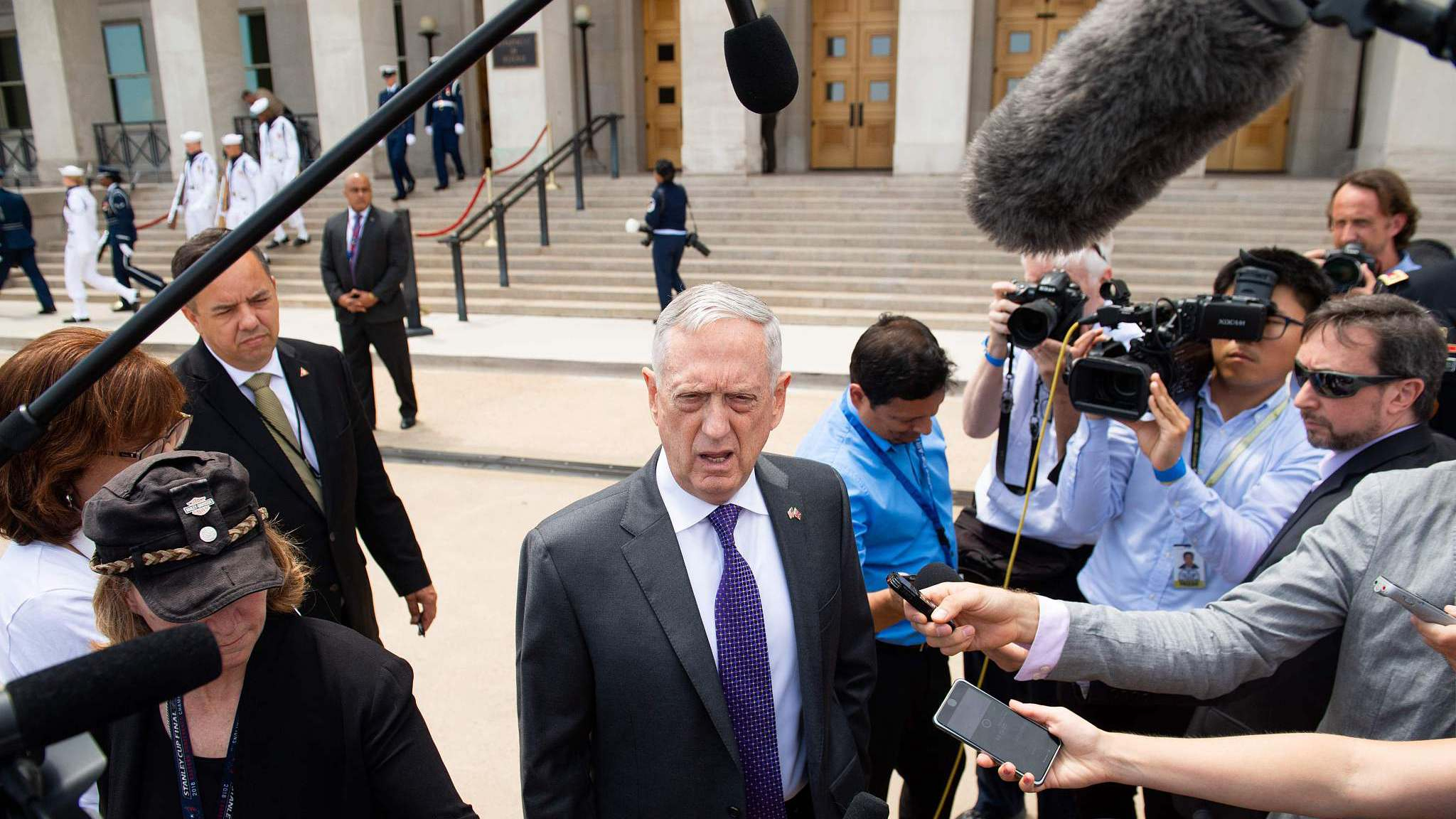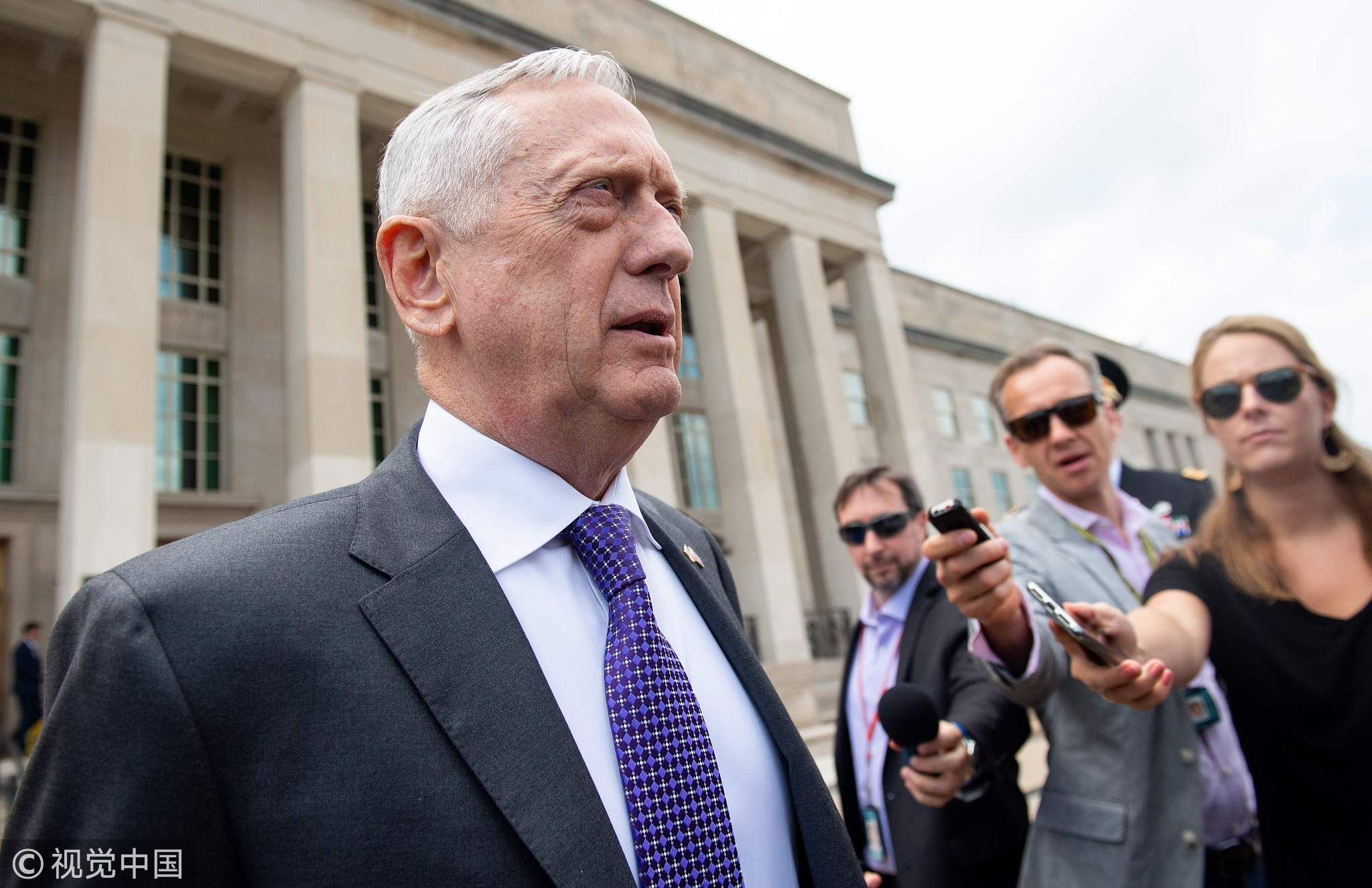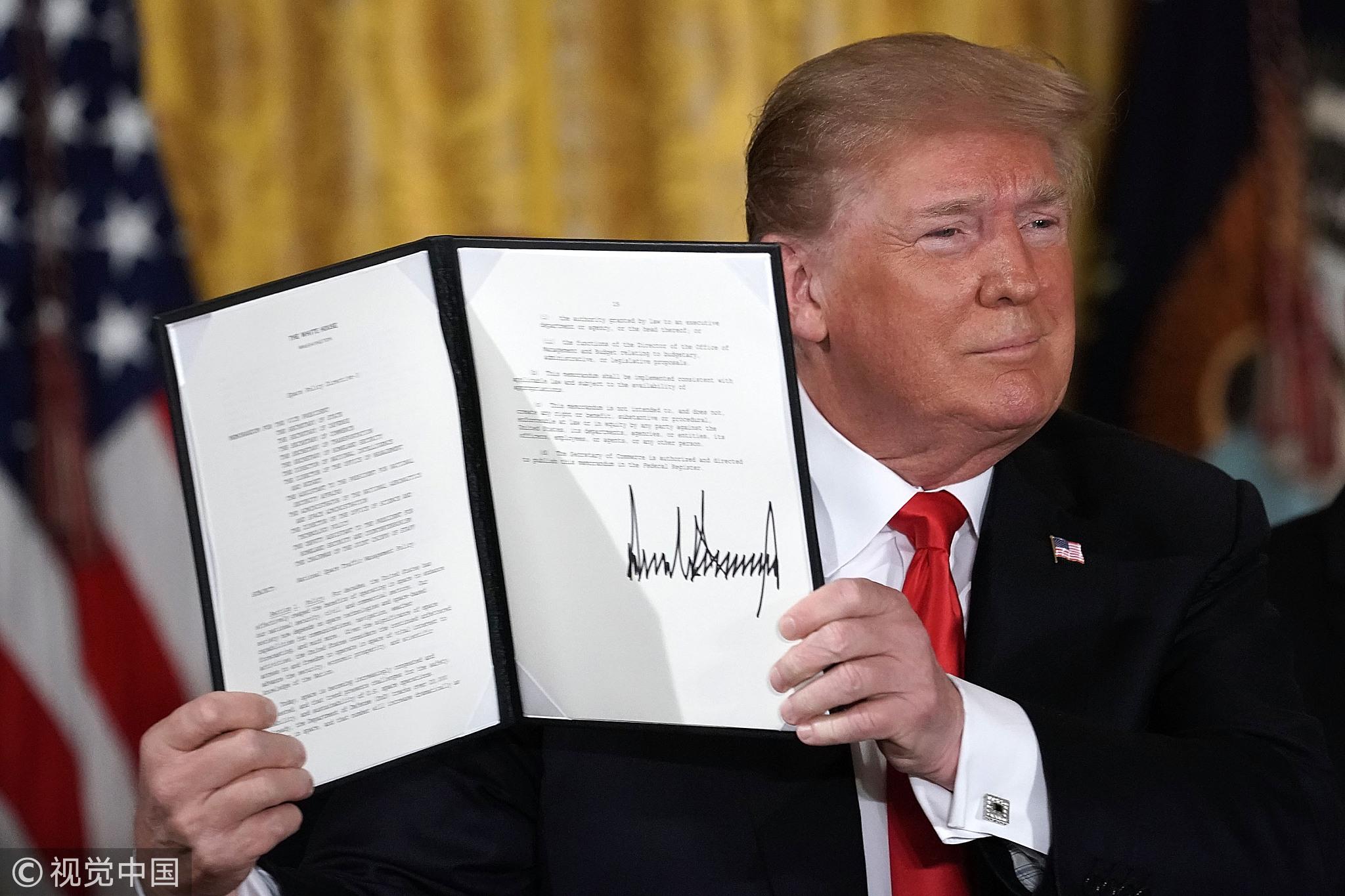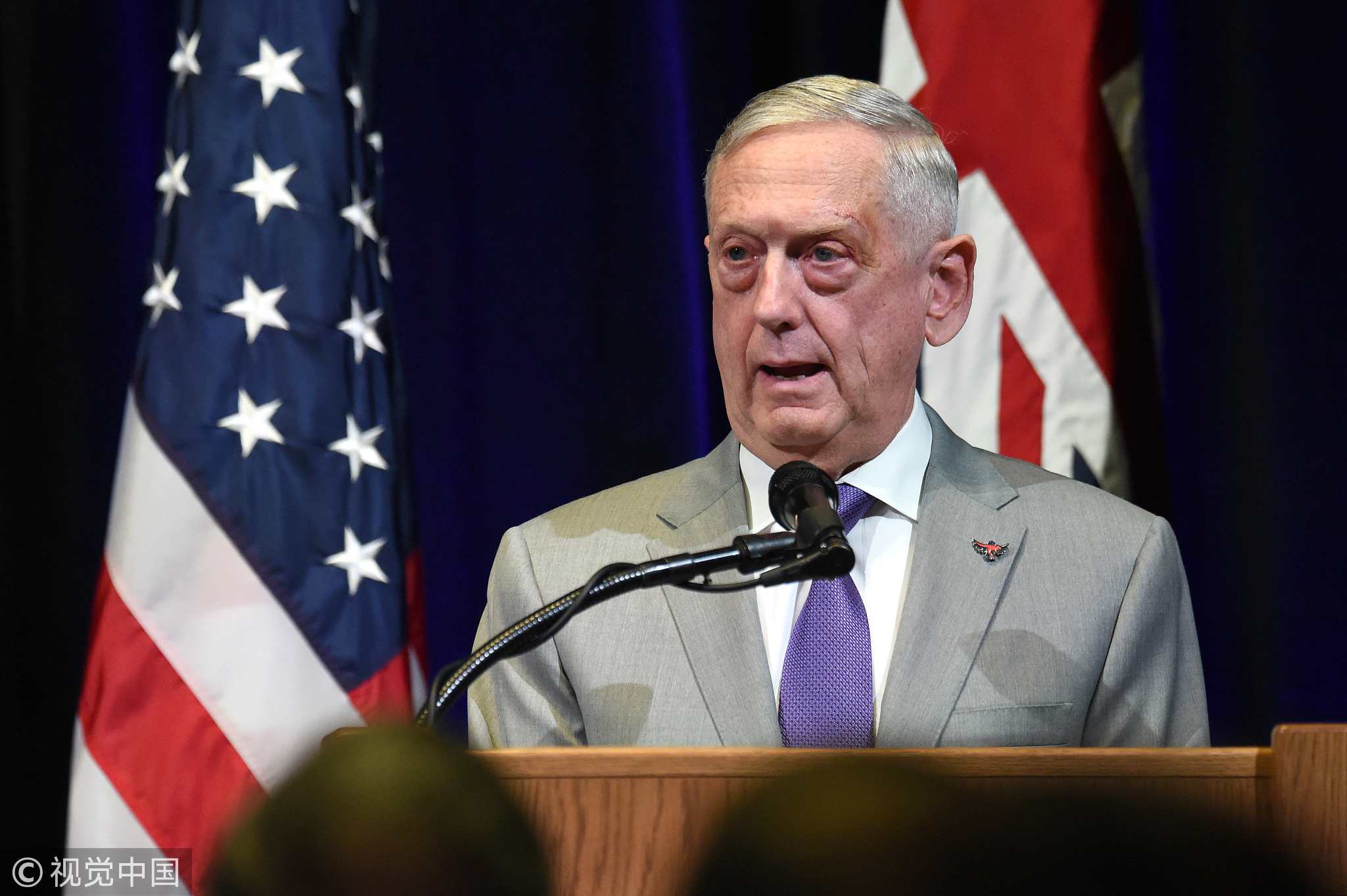
Politics
08:39, 08-Aug-2018
US defense secretary throws support behind new space-focused military command
Updated
08:33, 11-Aug-2018
CGTN

US Defense Secretary James Mattis on Tuesday threw his support behind the idea of creating a space-focused military command but stopped short of promising the new “Space Force” branch of service that President Donald Trump has touted.
Trump called for the creation of a sixth branch of the military, for space, a move critics said could harm the Air Force and which US officials say would require an act of Congress.
The US military, however, could create a unified combatant command for space, like one it created to focus on cyber warfare.

US Secretary of Defense James Mattis speaks to the press outside of the Pentagon in Washington, DC, August 7, 2018. /VCG Photo
US Secretary of Defense James Mattis speaks to the press outside of the Pentagon in Washington, DC, August 7, 2018. /VCG Photo
A Pentagon report to Congress expected in the coming days could examine the possibility of doing something similar with the US military’s space capabilities, which include everything from satellites enabling the Global Positioning System (GPS) to sensors that help track missile launches.
Asked whether he supported establishing a new combatant command for space, Mattis responded: “Yes, absolutely.”
”We need to address space as a developing war-fighting domain and a combatant command is certainly one thing that we can establish,” he told reporters at the Pentagon, adding: “This is a process we’re in.”
Mattis once voiced opposition to creating a new branch of the US military to focus on space-based military assets, saying in a 2017 letter to a lawmaker that would likely “present a narrower and even parochial approach to space operations.”
Mattis has since suggested he was not ruling out the idea and on Tuesday left the possibility open.

US President Donald Trump holds up an executive order that he signed during a meeting of the National Space Council at the East Room of the White House in Washington, DC, June 18, 2018. /VCG Photo
US President Donald Trump holds up an executive order that he signed during a meeting of the National Space Council at the East Room of the White House in Washington, DC, June 18, 2018. /VCG Photo
Mattis said he was coordinating closely with Vice President Mike Pence and was in complete agreement with the White House.
Asked whether a new branch of the military would be created, Mattis responded: “I don’t have all the final answers yet. We’re still putting that together.”
The United States is a member of the 1967 Outer Space Treaty, which bars stationing weapons of mass destruction in space and only allows use of the moon and other celestial bodies for peaceful purposes.
The idea of a Space Force has been raised before, including in previous administrations, with proponents saying it would make the Pentagon’s efforts more focused and efficient.

US Secretary of Defense James Mattis speaks during a news conference at the Australia-US Ministerial consultations at Stanford University's Hoover Institution in Stanford, California, US, July 24, 2018. /VCG Photo
US Secretary of Defense James Mattis speaks during a news conference at the Australia-US Ministerial consultations at Stanford University's Hoover Institution in Stanford, California, US, July 24, 2018. /VCG Photo
It has also faced criticism from senior military officials.
Air Force Chief of Staff General David Goldfein told a 2017 congressional hearing that creating a new space branch would “move us in the wrong direction.” The Air Force oversees most of the country’s space-related military activity.
Goldfein has since praised Trump’s focus on space.
Source(s): Reuters

SITEMAP
Copyright © 2018 CGTN. Beijing ICP prepared NO.16065310-3
Copyright © 2018 CGTN. Beijing ICP prepared NO.16065310-3